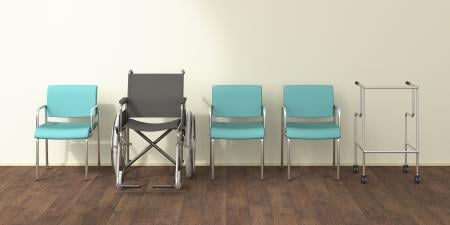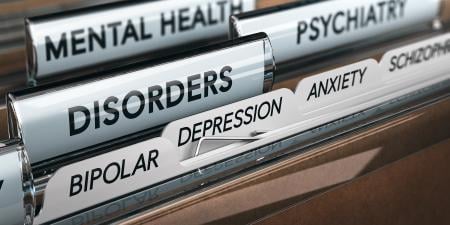Abstract
The International Classification of Diseases, 10th Revision, Clinical Modification (ICD-10-CM) is the system used by clinicians and medical coders to document diseases, symptoms, social circumstances, and external causes of illness and injury. ICD-10-CM codes for various forms of abuse and violence perpetrated against children and adults exist and facilitate the study of incidence, social context, and comorbid illness and injury. Extant abuse codes, however, fail to capture the profoundly exploitative nature of trafficking and adequately distinguish trafficking patients from other types of abuse patients. As a result, the first trafficking-specific codes have been approved for the 2019 ICD-10-CM update and are expected to strengthen data collection on incidence of and risk factors for trafficking, the burden of comorbid illness and injury, and resources needed to effectively care for trafficked persons.
The Power of Naming and Coding Abuse and Violence
The International Classification of Diseases, 10th Revision, Clinical Modification (ICD-10-CM) is a diagnostic classification system used in health care to code all diseases, symptoms, abnormal findings, social circumstances, and external causes of illness and injury recognized in patient encounters.1 This coding system enables entities like the National Center for Health Statistics at the Centers for Disease Control and Prevention to aggregate epidemiological data directly relevant to population health management and clinical treatments.
The ICD-10-CM classification system in medicine serves a purpose analogous to that of the penal code in criminal jurisprudence. The use of penal codes to classify and record crimes facilitates the tracking of criminal activity patterns in order to inform new legislation and resource allocation decisions meant to enforce the law more effectively. Similarly, the use of ICD-10-CM codes facilitates the tracking of health and risk trends in order to inform health policy and resource allocation decisions.2 Although other data collection and tracking tools exist, the ICD-10-CM is the coding system required under US legislation and represents a comprehensive classification system that lends itself to epidemiological and population health data analyses.2
The ICD-10-CM includes diagnosis codes for experiences such as child sexual abuse, spouse or partner violence, and elder physical abuse.1 Given the many physical and mental health problems associated with experiencing abuse and violence, naming the dimensions of abuse and violence experiences that can be addressed clinically is key to improving overall health and well-being. As with disease ICD-10-CM codes, the ability to track specific diagnosis codes for the spectrum of abuse that patients experience is critical to understanding, for any given type of abuse, its epidemiology, the burden of comorbid illness and injury, and the resources needed to effectively address it. The use of abuse codes as primary diagnoses is essential to amassing evidence in support of new prevention strategies, treatment best practices, services, reimbursement mechanisms, and new areas of research funding to specifically address the abuse and violence.
The various forms of abuse and violence cannot be understood in isolation, however, and the undergirding forces must be taken into account. The experience of abuse and violence is best understood as a complex interplay of the physical environment (residential placement, educational and employment opportunities), social circumstances (gender roles, family traditions, cultural and social norms, religious beliefs), and individual vulnerabilities and risks (truancy, substance use, gang involvement). Assessing whether abuse and violence play a role in presenting medical conditions, psychiatric symptoms, and traumatic injuries is essential to a more effective health care response to illness and injury. The assessment, medical documentation, and coding of the physical, social, and individual factors influencing the situation (ICD-10-CM Z codes), however, allow for a more comprehensive health care response that addresses underlying health-related social needs. If comprehensive medical documentation and coding is achieved and sustained over time, these data can also serve as the basis for health policy and resource allocation advocacy. Similarly, ICD-10-CM codes for external causes of morbidity (S, T, V, W, X, Y codes), including injury and poisoning, categorize the type, intent, and mechanism of injury, providing additional dimensions of information regarding the perpetration of abuse and violence that could inform primary, secondary, and tertiary prevention strategies.
In short, coding of the salient external causes of injury and morbidity and of any influencing factors can furnish the medical and public health community with the information needed to identify the risk factors that fuel and exacerbate abuse and violence and potentially the protective factors that could be leveraged to decrease incidence and minimize negative outcomes. It should be stressed, however, that coding is not possible without adequate assessment and medical documentation by the clinician during a patient encounter.3 The table offers a side-by-side comparison of the potential impact of focused vs comprehensive medical assessment and documentation on diagnostic coding, the health care response, and the understanding of long-term resources needed.
| Factors | Focused Medical Assessment and Documentation | Comprehensive Medical Assessment and Documentation |
|---|---|---|
| Diagnostic coding | In order of presumed causation:
|
In order of presumed causation:
|
| Health care response and treatment offered |
|
|
| Long-term resources needed | No additional resources needed | Policy and resource allocation needed for:
|
Human Trafficking: An Egregious Form of Interpersonal Abuse and Violence
Not only is human trafficking (HT) a crime under the US federal law, it is also a human rights violation and, by all accounts, a particularly egregious form of interpersonal abuse. The Trafficking Victims Protection Act (TVPA) of 2000,4 as amended (22 USC § 7102),5 defines “severe forms of trafficking in persons” as:
- sex trafficking in which a commercial sex act is induced by force, fraud, or coercion, or in which the person induced to perform such act has not attained 18 years of age; or
- the recruitment, harboring, transportation, provision, or obtaining of a person for labor or services, through the use of force, fraud, or coercion for the purpose of subjection to involuntary servitude, peonage, debt bondage, or slavery.
To be defined as human trafficking under federal law, the commercial exploitation of an adult must be achieved by provable force, fraud, or coercion. On the other hand, the commercial sexual exploitation of a child is always human trafficking under the TVPA, regardless of the means used to achieve the child’s exploitation. The law recognizes that children (ie, those younger than 18 years of age) lack the intellectual capacity and developmental maturity to consent to their own exploitation and therefore assumes that a child engaging in a commercial sex act has been “induced to perform such act”—be it by force, fraud, coercion, threat, blackmail, intimidation, deception, psychological manipulation, suggestion, or other calculated means—and that the crime of sex trafficking has been committed against the child.4,5
In the United States, HT for manual or domestic labor and sexual labor6 are known as labor trafficking and sex trafficking, respectively. The commercial exploitation of trafficked persons essentially results in their commodification or, in other words, their dehumanization as property that can be bought, used, sold, and discarded and whose sole value is commercial and based on their ability to generate profits. Motivated by strong financial incentives, traffickers often operate at the extremes of abuse and violence to gain and maintain power and control over those who perform the labor and generate the profits.7-9 In addition to suffering abuse and violence inflicted by their traffickers, sex-trafficked children and adults also suffer physical and sexual violence at the hands of those who pay their traffickers to violate them with impunity.10-12
From violence-related injuries and sexually transmitted infections to communicable diseases and untreated chronic diseases, HT has devastating implications for the physical health of those affected.13,14 In addition, trafficking can result in a wide range of industry-specific occupational injuries, such as falls from heights (construction), exposure to respiratory and skin irritants (agriculture), and joint or back strains from repetitive motions (domestic work).14 Due to trafficking victims’ high rates of physical, sexual, and emotional abuse and violence, HT is further associated with severe psychological and emotional distress. Indeed, the mental health effects of HT have been described as tantamount to those observed among survivors of torture.15
Health care professionals have the unique opportunity to identify and assist victims of human trafficking. Studies confirm that trafficked persons are accessing care.12,16-19 One study found that 88% of trafficking survivors reported having been cared for by a health care professional while being trafficked yet none were assisted in escaping their captors.12 As a result of increasing calls to action, efforts to educate health care professionals about HT and to provide training on the identification and proper care of trafficked patients have been escalating in recent years.14,20,21
The Case for ICD Diagnosis Codes for Human Trafficking
Until implementation of the 2019 ICD-10-CM update on October 1, 2018, the ICD-10-CM trafficking-specific abuse codes did not exist. Prior to this date, abuse codes available for documenting child, partner, and elder abuse failed to capture the exploitative nature of human trafficking and thus the varying degrees of physical, sexual, psychological, and emotional trauma experienced by trafficked persons during their exploitation.9 Indeed, although child sex trafficking is legally recognized as a form of child abuse,4,22 the additional component of commercial exploitation that is involved in human trafficking places trafficking and its sequelae into a category of its own. While commercial exploitation falls along the same continuum of interpersonal abuse and violence, it is unique in that it entails stripping individuals of their autonomy and inherent human rights and thus can lead to the extreme level of psychological trauma seen in torture survivors.15
Given HT’s profound health sequelae for survivors, the needs of this patient population are quite extensive and the experience of trafficking merited an ICD-10-CM code structure of its own for more robust data collection on its two forms—forced labor and sexual exploitation. Responding to survivors’ broad spectrum of health needs, both medical and psychiatric, as well as their social and economic needs will require abundant resources. Understanding the extent and the types of resources needed to effectively address HT is critical to developing coordinated interdisciplinary care strategies and their mechanisms for funding. The ability to track this diagnosis is key to furthering our epidemiological understanding of the incidence of trafficking in the United States as well as to expanding our knowledge base, through research, of (1) risk factors that could facilitate early screening and identification of adults and children at risk, (2) comorbid illnesses and injuries that may require dedicated diagnostic and treatment efforts, and (3) potential prevention strategies.
While extensive efforts and notable advances have been made within specific institutions and health systems, the overall low level of victim identification and medical documentation in the US health care system and the lack of human trafficking codes until now unfortunately have reinforced each other and could have thwarted development of an effective response protocol in the clinical setting beyond involving the National Human Trafficking Hotline or law enforcement (LE). Although well intended, LE involvement, unless required by state mandatory reporting laws (eg, as in cases involving minors), can lead to increased harm to trafficked patients and their loved ones and should only be pursued after engaging patients in discussion and obtaining explicit consent to do so with a clear understanding that LE involvement does not guarantee safety.23 As the training of health care professionals continues to expand, victim identification and medical documentation can be expected to increase, and the new trafficking-specific codes can be expected to facilitate relevant health data tracking that may improve the health sector’s effectiveness.
Although medical documentation and coding of human trafficking must be thoughtful and measured so as to minimize the potential harms and stigma associated with the diagnosis, the use of ICD-10-CM codes for secondary data purposes (eg, identifying opportunities and gaps in comprehensive care, informing policy and resource allocation) can better equip the health care system to assist persons suffering exploitation without access to services and resources. Furthermore, more robust health data collection may also be useful in determining reimbursement payment methods that account for, and thus encourage, antitrafficking efforts in the clinical setting such as victim identification, intervention, and referral that may otherwise be considered nonbillable, time-consuming activities. Ultimately, medical documentation and coding of human trafficking are critical in developing an infrastructure of services and resources capable of addressing the profound and wide-ranging needs of this patient population.
References
-
National Center for Health Statistics, Centers for Disease Control and Prevention. International Classification of Diseases, 10th Revision, Clinical Modification (ICD-10-CM). https://www.cdc.gov/nchs/icd/icd10cm.htm. Updated June 11, 2018. Accessed June 27, 2018
-
Brooks P. Basic introduction to ICD-10-CM. Centers for Medicare and Medicaid Services. https://www.cms.gov/Medicare/Coding/ICD10/Downloads/032310_ICD10_Slides.pdf. Accessed June 27. 2018.
-
National Center for Health Statistics, Centers for Medicare and Medicaid Services. ICD-10-CM Official Guidelines for Coding and Reporting FY 2018 (October 1, 2017-September 30, 2018). https://www.cms.gov/Medicare/Coding/ICD10/Downloads/2018-ICD-10-CM-Coding-Guidelines.pdf. Accessed June 27, 2018.
-
Victims of Trafficking and Violence Protection Act of 2000, Pub L No. 106-386, 114 Stat 1464.
-
22 USC §7102 (2018).
-
US Department of State. Trafficking in persons report. https://www.state.gov/documents/organization/226844.pdf. Published June 2014. Accessed October 9, 2018.
- Turner-Moss E, Zimmerman C, Howard LM, Oram S. Labour exploitation and health: a case series of men and women seeking post-trafficking services. J Immigr Minor Health. 2014;16(3):473-480.
- Kiss L, Pocock NS, Naisanguansri V, et al. Health of men, women, and children in post-trafficking services in Cambodia, Thailand, and Vietnam: an observational cross-sectional study. Lancet Glob Health. 2018;16(3):473-480.
- Ottisova L, Hemmings S, Howard LM, Zimmerman C, Oram S. Prevalence and risk of violence and the mental, physical and sexual health problems associated with human trafficking: an updated systematic review. Epidemiol Psychiatr Sci. 2016;25(4):317-341.
- Hossain M, Zimmerman C, Abas M, Light M, Watts C. The relationship of trauma to mental disorders among trafficked and sexually exploited girls and women. Am J Public Health. 2010;100(12):2442-2449.
- Raphael J, Reichert JA, Powers M. Pimp control and violence: domestic sex trafficking of Chicago women and girls. Women Crim Justice. 2010;20(1-2):89-104.
- Lederer LJ, Wetzel CA. The health consequences of sex trafficking and their implications for identifying victims in healthcare facilities. Ann Health Law. 2014;23(1):61-91.
- Macias-Konstantopoulos W. Human trafficking: the role of medicine in interrupting the cycle of abuse and violence. Ann Intern Med. 2016;165(8):582-588.
-
Macias-Konstantopoulos W, Ma ZB. Physical health of human trafficking survivors: unmet essentials. In: Chisolm-Straker M, Stoklosa H, eds. Human Trafficking is a Public Health Issue: A Paradigm Expansion in the United States. Cham, Switzerland: Springer International; 2017:185-210.
-
Organization for Security and Co-operation in Europe Office of the Special Representative and Co-ordinator for Combating Trafficking in Human Beings; Ludwig Boltzmann Institute of Human Rights; Helen Bamber Foundation. Trafficking in Human Beings Amounting to Torture and Other Forms of Ill-Treatment. https://www.osce.org/cthb/103085?download=true. Published June 2013. Accessed October 9, 2018.
-
Family Violence Prevention Fund. Turning pain into power: trafficking survivors’ perspectives on early intervention strategies. San Francisco, CA: Family Violence Prevention Fund; 2005.
- Baldwin SB, Eisenman DP, Sayles JN, Ryan G, Chuang KS. Identification of human trafficking victims in health care settings. Health Hum Rights. 2011;13(1):e36-e49.
- Chisolm-Straker M, Gaïgbé-Togbé B, Baldwin S, Ndukwe N, Johnson PN, Richardson LD. Health care and human trafficking: we are seeing the unseen. J Health Care Poor Underserved. 2016;27(3):1220-1233.
-
The Mass General Freedom Clinic: A Public Health Innovation to Improve the Health Sector’s Response to Human Trafficking Survivors: Closed Hearing Before the US Department of Health and Human Services Task Force to Prevent and End Human Trafficking (December 2016) (statement of Wendy L. Macias-Konstantopoulos, MD, MPH).
- Stoklosa H, Grace AM, Littenberg N. Medical education on human trafficking. AMA J Ethics. 2015;17(10):914-921.
- Grace AM, Ahn R, Macias Konstantopoulos W. Integrating curricula on human trafficking into medical education and residency training. JAMA Pediatr. 2014;168(9):793-794.
-
US Department of Health and Human Services. The Child Abuse Prevention and Treatment Act as amended by PL 114-198 the Comprehensive Addiction and Recovery Act of 2016, PL 114-22 Justice for Victims of Trafficking Act of 2015. Washington, DC: Children’s Bureau, Administration for Children and Families; May 2017. https://www.acf.hhs.gov/sites/default/files/cb/capta2016.pdf. Accessed June 18, 2018.
-
Macias-Konstantopoulos W. The complexities of recognizing and responding to trafficking patients in the ED. ACEP Now. May 25, 2018. https://www.acepnow.com/article/the-complexities-of-recognizing-and-responding-to-trafficked-patients-in-the-ed/. Accessed July 6, 2018.



